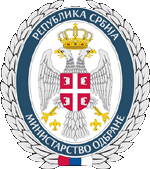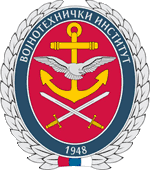|
REPUBLIC OF SERBIA MINISTRY OF DEFENCE
MINISTRY OF DEFENCE Material Resources Sector Defensive Technologies Department
|
STUDY OF POSSIBILITIES OF APPLICATION OF A THERMOPILE-BASED GAS SENSOR
Centre of Microelectronic Technologies, Institute of Chemistry, Technology and Metallurgy, University of Belgrade, danijela@nanosys.ihtm.bg.ac.rs olga jakšić Centre of Microelectronic Technologies, Institute of Chemistry, Technology and Metallurgy, University of Belgrade, danijela@nanosys.ihtm.bg.ac.rs milče m smiljanić Centre of Microelectronic Technologies, Institute of Chemistry, Technology and Metallurgy, University of Belgrade, danijela@nanosys.ihtm.bg.ac.rs žarko lazić Centre of Microelectronic Technologies, Institute of Chemistry, Technology and Metallurgy, University of Belgrade, danijela@nanosys.ihtm.bg.ac.rs
Abstract: The goal of this work is exploring the possibilities of application of a thermopile-based gas sensor. The main task was to study for which kind of gases this type of sensor would be suitable. For this purpose self-developed 1D analytical model was used. Modelling was done for multipurpose sensors developed at ICTM, but also for the same structure that would be fabricated on SOI substrate. Output signal of thermopile-based sensor depends on thermal conductivity of the surrounding gas. When this type of sensor is applied as a gas sensor, prerequisite is that the gases have different thermal conductivities so that the sensor can distinguish between them. According to simulation results, thermopile-based sensors could be applied for a number of gases which are important in industrial safety, homeland security, healthcare, domestic safety, etc. The results obtained for hydrogen detection were already presented, so in this work simulation data for other gases of interest will be given. This includes methane, ammonia, hydrogen sulfide, chlorine. Important conclusion is that thermopile-based sensor is capable to detect wide variety of gases. Keywords: thermopile, gas type sensor, gas thermal conductivity, analytical modelling, SOI
|
|||||
|
||||||

